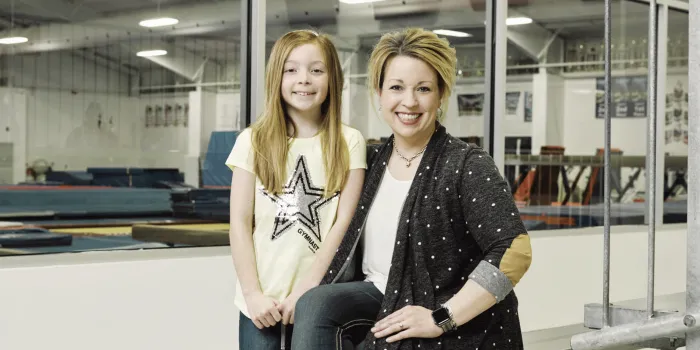When my daughter Leighton, who is 10 now, was about 4 years old, she started getting nosebleeds. And I’m not talking regular, run-of-the-mill nosebleeds. These continued for hours. In addition to the constant nosebleeds, her preschool teacher was calling us all the time to say that Leighton seemed lethargic and was even falling asleep in class. Her pediatrician referred us to a hematologist, who suspected it may be leukemia. Of course, I panicked at the thought. But thank goodness they ruled that out. They also tested her von Willebrand factor, and that checked out OK. The doctor said she was fine and sent us on our way.
But she wasn’t fine. Over the next 2 ½ years, the nosebleeds continued and even got worse—to the point where she spent more time in the school office with cotton up her nose than she did in the classroom. I took her back to the hematologist and explained what her nosebleeds were like. I even took photos of the cotton. He asked if she bruised easily. To be honest, I’d never given her bruising much thought. What active child who plays soccer and flag football didn’t bruise easily? The hematologist recommended she have a platelet microscopy, and that confirmed she has an extremely rare bleeding disorder known as platelet storage pool disorder (PSPD).
The doctors told her that soccer and flag football were too dangerous to continue. But Leighton wanted to do a sport, and she begged me to let her try gymnastics. She started taking a class at our local gym and within a month the gym invited her to compete on a team. We told her coaches and the gym owner about her bleeding disorder, and I wrote an action plan for what could happen if she got hit in the chest or stomach, or what to do if she started bleeding. She has to wear some protective equipment—grips on her hands, for instance—and she ices anything immediately if she gets hit.
I have to admit that at first, I think I thoroughly terrified them. But as time went on, they realized it was scarier on paper than in reality. We are so grateful that both of the gyms where she now trains—Tops Gymnastics and Ohio Sports Academy—were open to coaching someone with PSPD.
This year, in addition to bars, beam, vault and floor, Leighton started competing in trampoline and tumbling. She became the Ohio Level 3 state champion in vault as well as state champion in all three trampoline and tumbling events, and will compete at the National Championships.
Leighton has to have a nasal endoscopy every year, where doctors go in with a camera and cauterize every single blood vessel. They can only do that so many times, though, so at some point we’ll have to find another solution to control the nosebleeds. Through it all, I have never heard her complain. I have never heard her make an excuse. I have never seen her be a victim to her circumstances.
Of course I’m nervous to let her compete in gymnastics, but by doing so, we’re teaching her to get up after falling, to become an advocate for herself, and to make smart choices where health and safety are concerned. Most of all, she’s learning to go for her dreams and live the life she wants.

